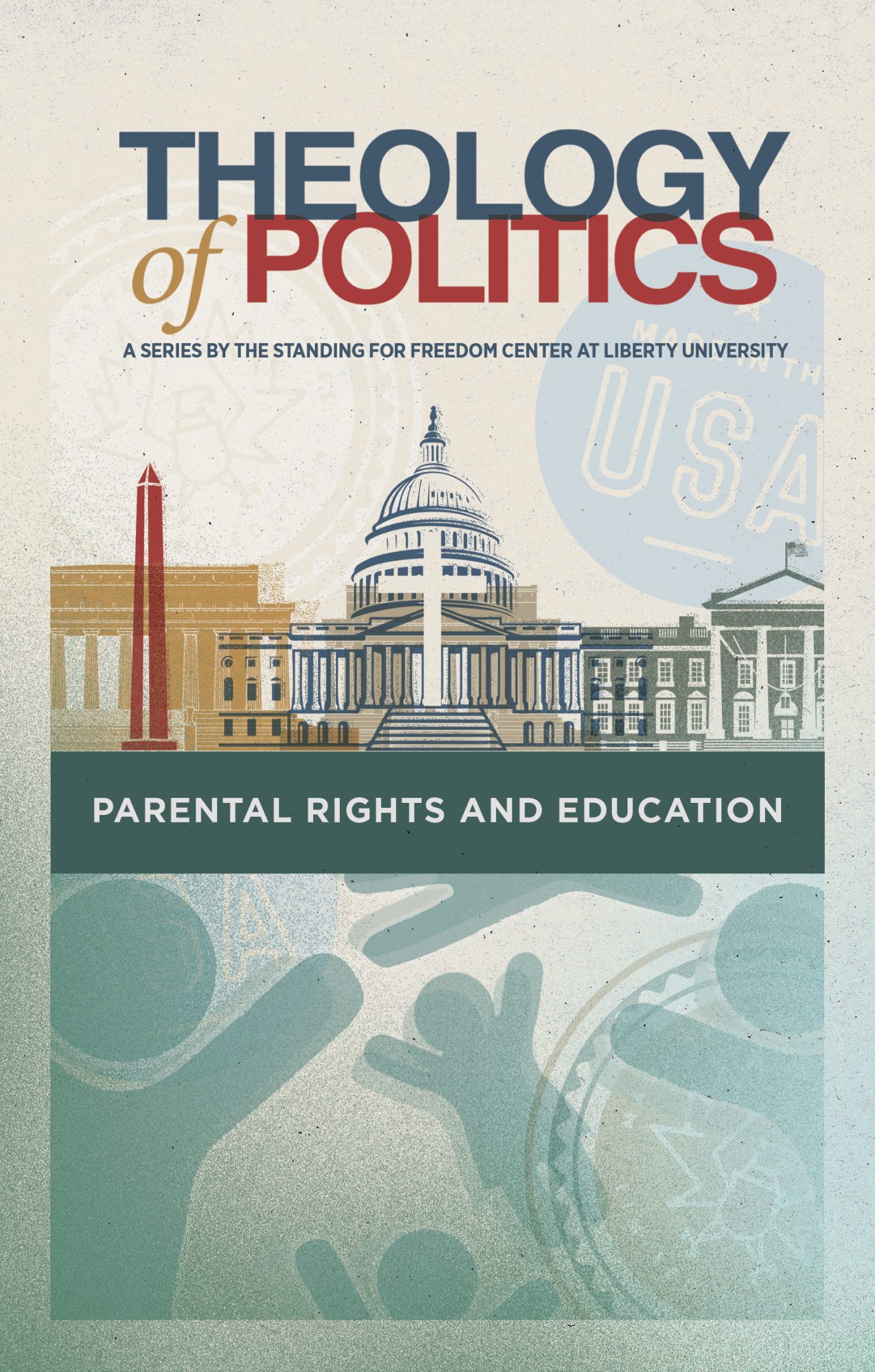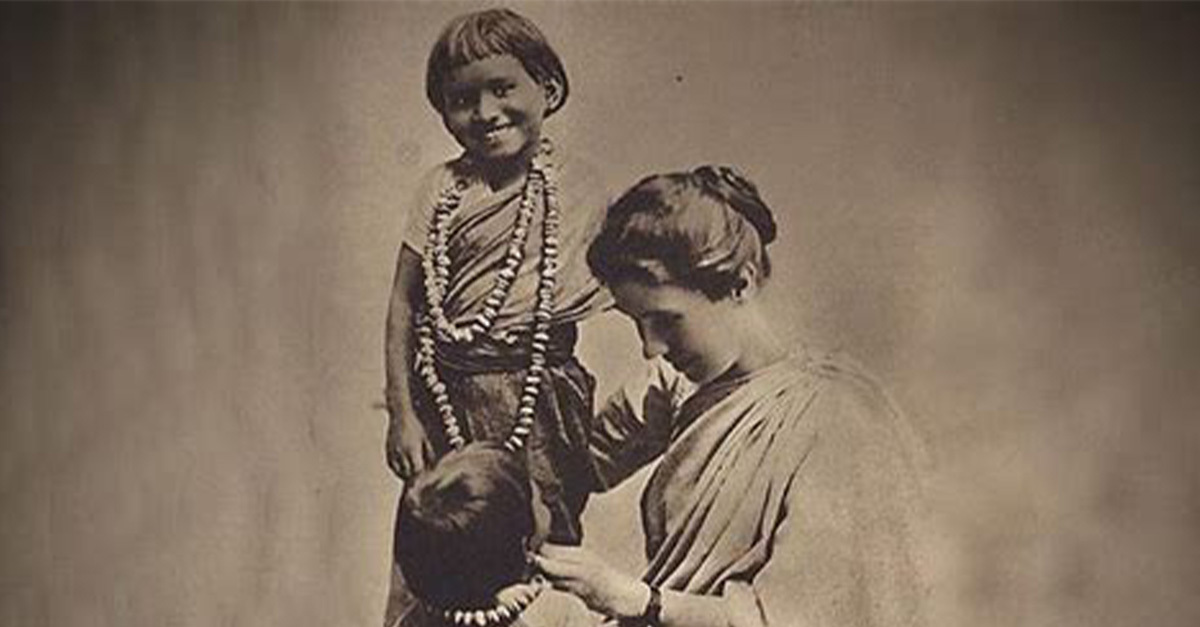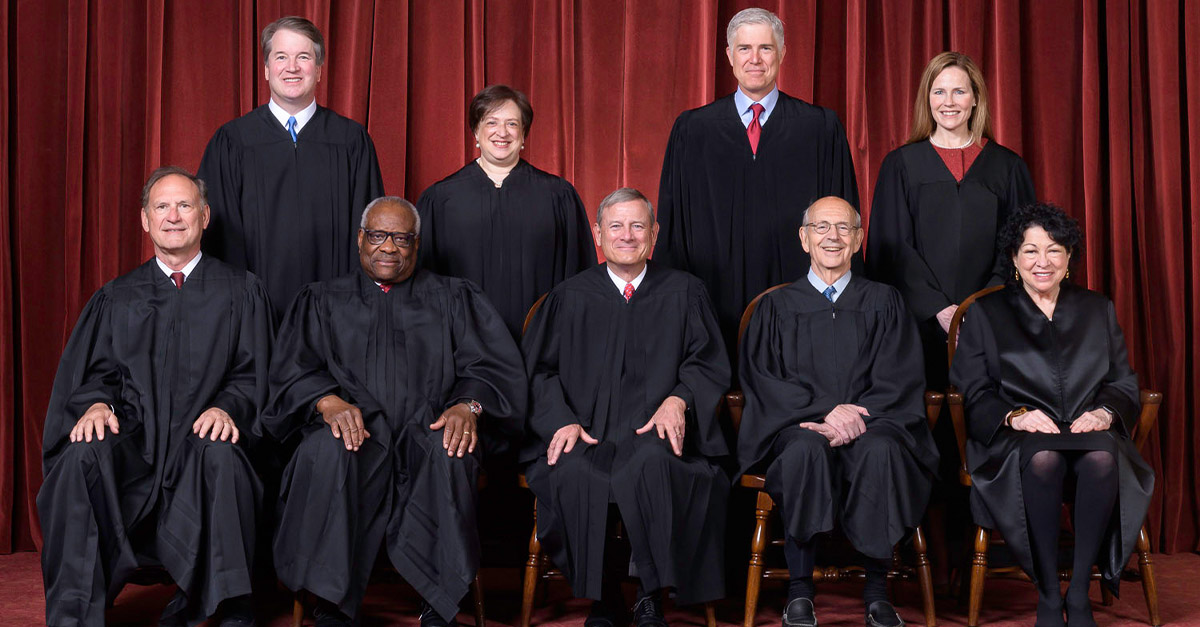


Get a free copy of Parental Rights & Education when you subscribe to our newsletter!

“If there be any reserve in my giving to Him who so loved that He gave His Dearest for me, then I know nothing of Calvary love.”
–Amy Carmichael
Born in a small village called Millisle on the Ards Peninsula in Northern Ireland, future missionary Amy Carmichael (1867-1951) grew up in a churchgoing family and helped her mother care for and raise her siblings. Her father was a businessman who died when she was seventeen. Even at a young age, Amy possessed a compassion for others and a gift of service for those less fortunate than she.
She began a Bible study for young factory girls in Belfast known as “shawlies,” named for the shawls they wore over their heads to shield them from the cold since they could not afford proper hats. Most people in Amy’s church wanted nothing to do with them, but Amy knew that they needed Christ as much as she did. As her relationship with them grew, she moved into their neighborhood, where a church was built to hold 500 of them.
With financial strain on the family increasing after her father’s passing, Amy and her mother and sister packed up their belongings and moved to England. Amy continued her ministry with factory workers in Manchester, sleeping in a bug-infested apartment to be nearer to the people. She began attending Keswick Convention meetings where she was greatly influenced by D.L. Moody, James Hudson Taylor, and Robert Wilson, whom she affectionately called “Fatherie.”
In 1888, a Keswick mission committee was formed for the purpose of sending out and supporting Keswick missionaries. Amy knew she was being called by God to go.
Amy set off for the west coast of Japan, but it wasn’t long before she returned home due to illness. Soon after, Amy was presented with a missionary opportunity to work with an Anglican mission in Bangalore, India, called the Church of England Zenana Missionary Society. Unbeknownst to Amy, she would not ever return home.
Amy quickly began pouring over the Tamil language and Indian customs, learning of their impenetrable caste system. Appalled by the nominal Christianity widely accepted by Indian Christians and missionaries, Amy bucked traditional missionary protocol by refusing to wear European clothing. She instead donned saris, slept on a mat on the ground rather than in a bed, and refused to use anything other than Scripture to witness to the women to whom she ministered. As she explained in Things as They Are: Mission Work in Southern India,
“The dead weight of heathenism is heavy enough, but when you pile on the top of that the incubus of a dead Christianity — for a nominal thing is dead — then you are terribly weighted down and handicapped.”
What made Amy most angry, though, was the existence of infant and child marriage and temple prostitution in the name of the Hindu religion. In March 1901, in a village called Dohnavur, just 15 miles south of Tinnevelly, a 7-year-old girl named Preena approached Amy. She had just escaped from a Hindu temple, where she had been sold to be trained in prostitution. She had previously attempted to escape twice, but was caught, beaten, and her hands were branded with hot irons as punishment. This time, she would find refuge.
Despite protests by the local Hindu temple, Amy was eventually allowed to keep Preena, who would be the first child Amy would take in. For the next 50 years of her life, Amy would be known as “Amma,” a “mother” who dedicated herself to saving abused, abandoned girls like Preena and the babies born to temple prostitutes. And so began the Dohnavur Fellowship.
In 1916, the bungalow that once provided shelter for just a handful of orphans was transformed into the Dohnavur Fellowship. It contained 12 nurseries housing dozens of infants, toddlers, and children. By 1918, the Fellowship rescued its first boy, leading to the adoption of almost 80 boys over the next 8 years.
Amy spent the rest of her life ensuring that Dohnavur was a place where “the Family” could learn about the love of Jesus. She was deeply concerned for the spiritual soundness of the children over which she presided. She often traveled long distances to rescue just one child from a life of abuse and suffering.
In her writings to people back home about her work, she refused to embellish or romanticize her experiences. Her book, Things As They Are: Mission Work in Southern India, shocked many in England. While they expected whimsical success stories and redemption, Amy gave them frankness. She wrote about the ugly conditions she faced and offered criticism of current missionary efforts. Some in England even pushed to have Amy recalled from the mission field. But Amma remained.
On October 24, 1931, Amy prayed,
“Do anything, Lord, that will fit me to serve Thee and to help my beloveds.”
Later that day, Amy broke her leg and twisted her spine after stumbling into a shallow hole. South India’s medical resources could not successfully treat her injuries. Never could Amy have imagined that the “anything” she was praying for would have left her immobile, in constant pain, and confined to a bed after spending the last 63 years giving all of her energy and physical endurance to others.
She lived for almost 20 more years after that, writing books and letters, ministering to the Dohnavur family from her bedroom, and receiving visitors. In her lifetime, Amy was able to see the Dohnavur Fellowship grow to help almost 2,000 children. From it grew school buildings, cottage homes, a House of Prayer, gardens, kitchens, a dairy farm, workshops, building offices for carpenters and electricians, and even a hospital.
Never once did Amy ask anyone for much-needed funding to provide for the growth of Dohnavur. In her book, The Beginning of a Story, she wrote of her conviction to rely solely on prayer:
“We do not tell when we are in need unless definitely asked, and even then, not always. We rely upon the verses which assure us that our Father knows our needs, and we take it that with such a Father, to know is to supply.”
Dohnavur was always provided with exactly the resources it needed at exactly the right time, never lacking. In every circumstance, despite the rapid growth and the multiplying mouths to feed, the Lord provided.
Amy Carmichael died in 1951 at the age of 83. Today, she is buried at Dohnavur Fellowship in “God’s Garden,” according to her wishes, underneath a birdbath labeled “Ammai.”
Amy’s ministry was the epitome of Jesus’ words in Luke 18:29-30:
“Truly, I say to you, there is no one who has left house or wife or brothers or parents or children, for the sake of the kingdom of God, who will not receive many times more in this time, and in the age to come eternal life.”
One humble woman’s obedience to God impacted young working-class girls in northern Ireland and factory workers in Manchester, expanded to southern India, and grew into the Dohnavur Fellowship. The ministry is still in operation today, covering over 400 acres, supplying over 15 nurseries, and housing 500 children at once. Her legacy remains as the Lord stirs in the hearts of those who read her books, learn of her story, and step into the mission field.
“If there be any reserve in my giving to Him who so loved that He gave His Dearest for me, then I know nothing of Calvary love.”
– Amy Carmichael
Follow Reagan on Twitter! @thereaganscott
